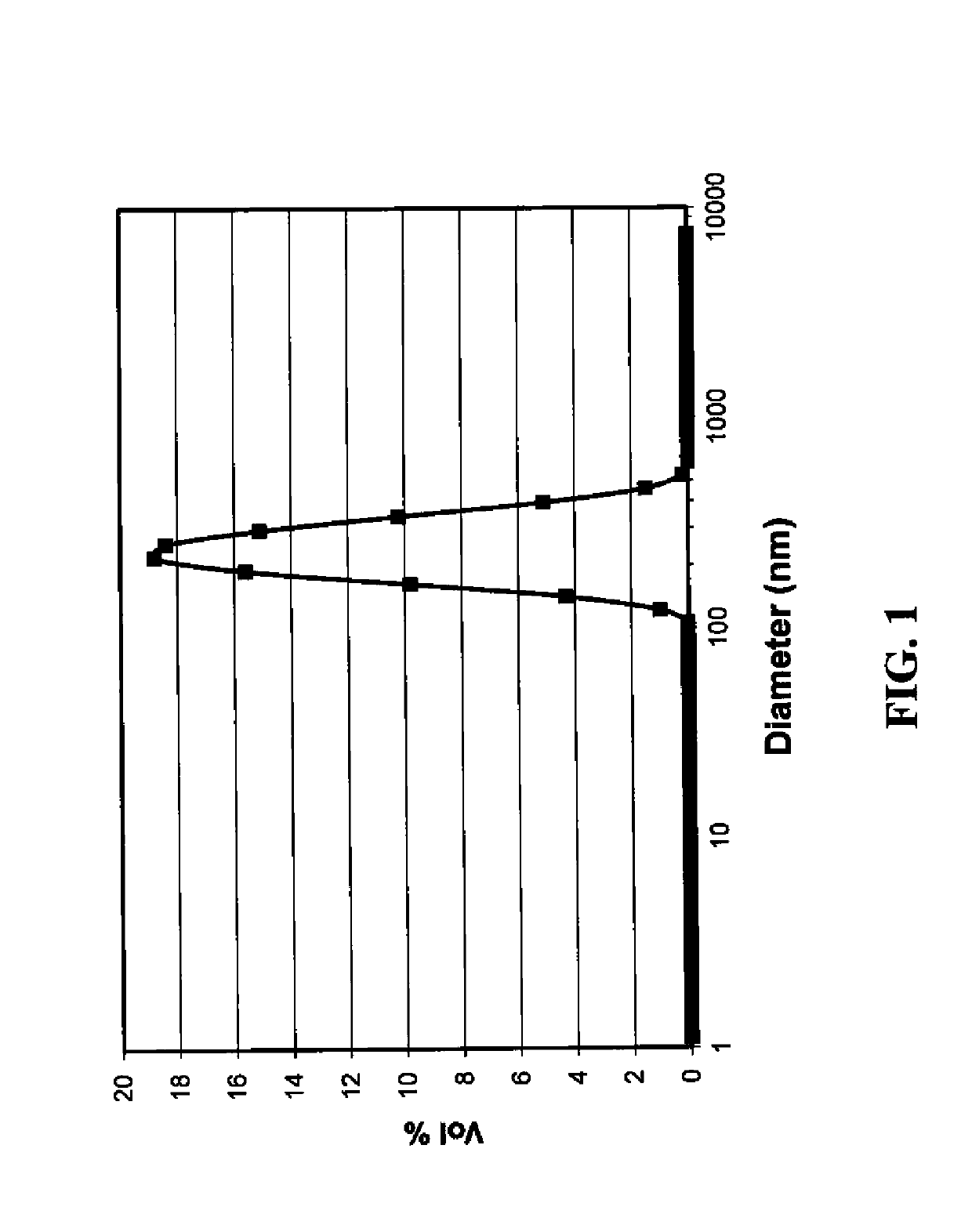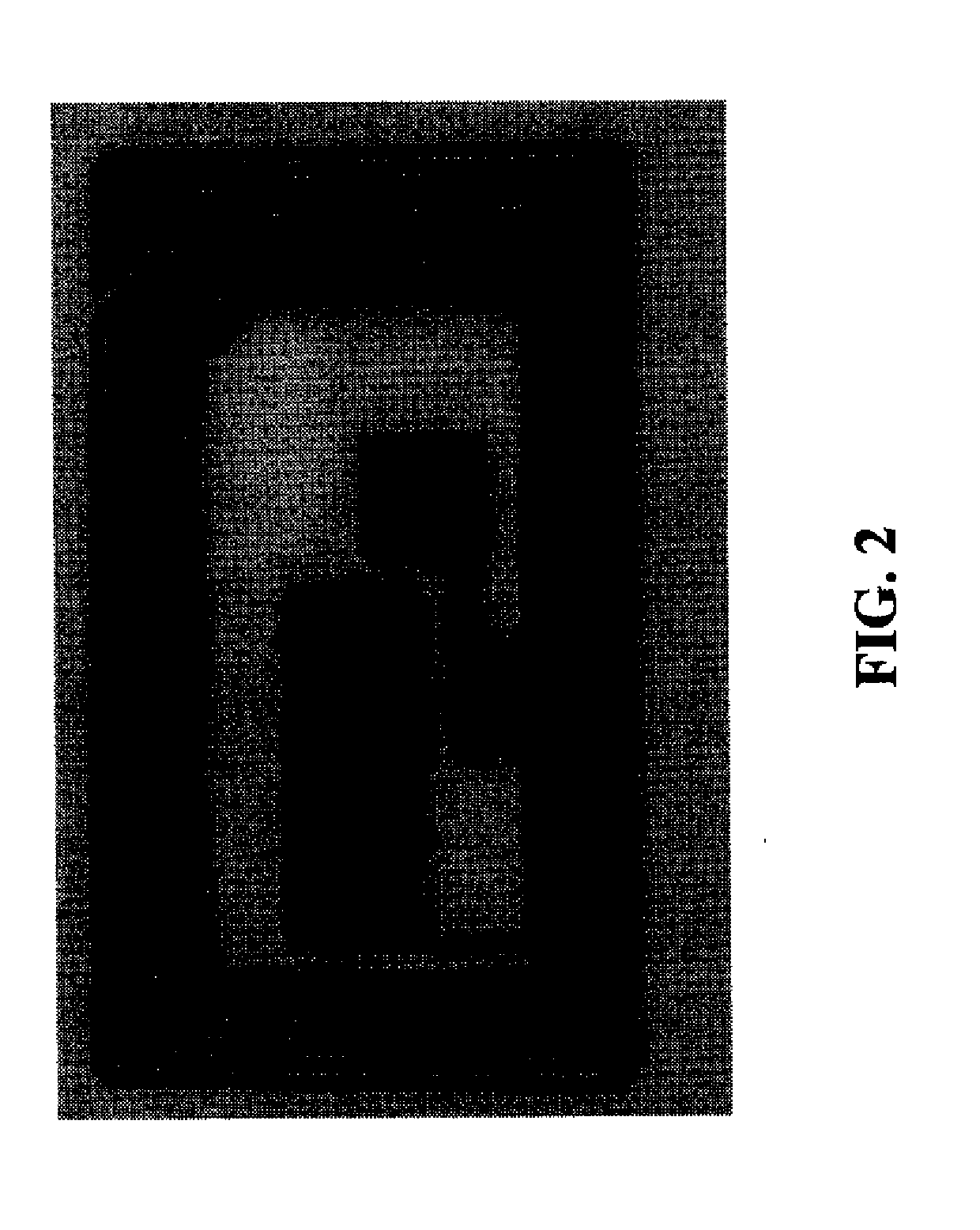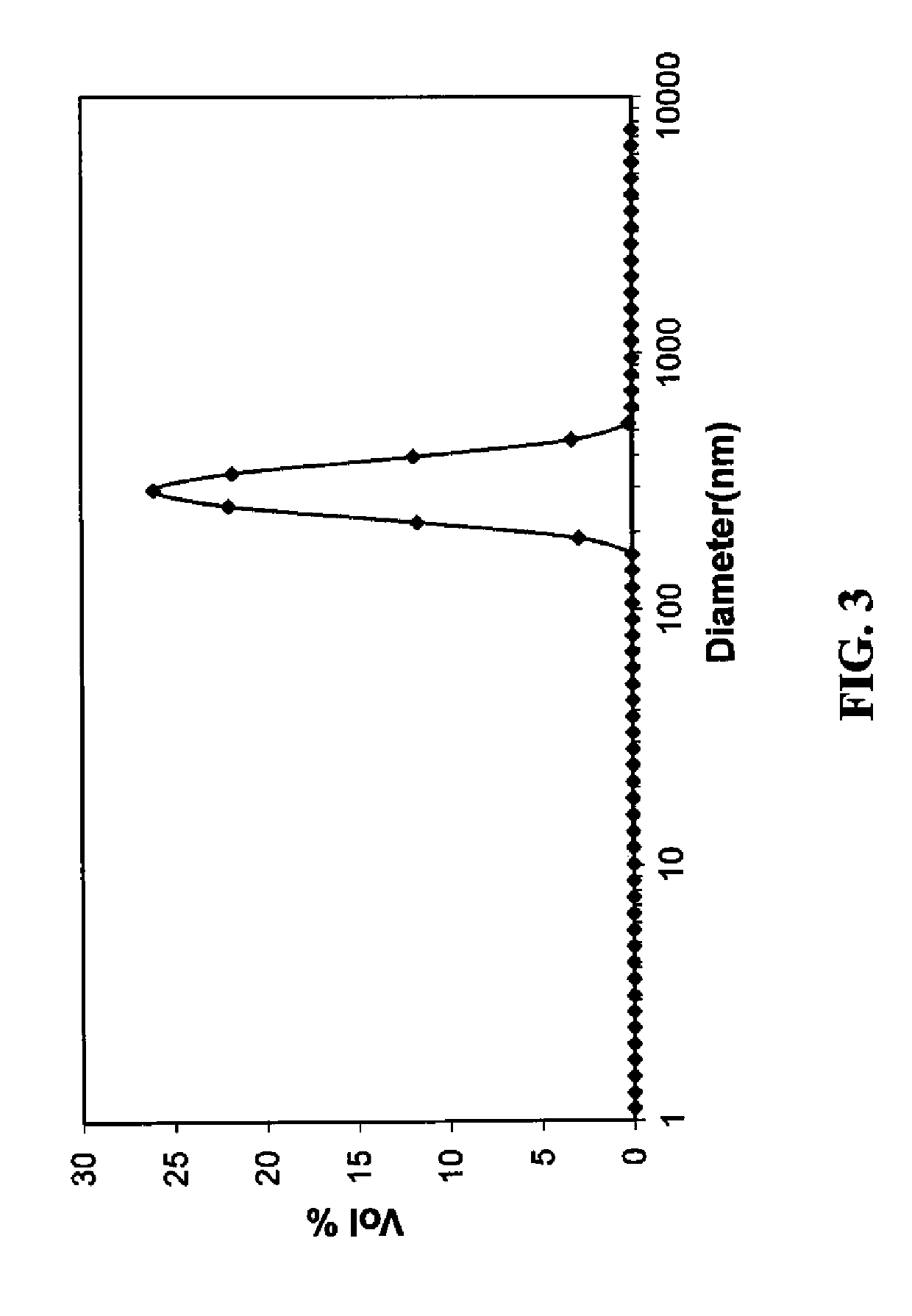Method of making silver-containing dispersions
a silver nanoparticle and composite technology, applied in the direction of electrically conductive paints, coatings, etc., can solve the problems of incompatible ink with many polymeric and paper substrates, time-consuming and expensive photolithographic and electroless techniques, and inability to manufacture ink, etc., to achieve easy deposited or formed, easy to carry out, and safe and inexpensive
- Summary
- Abstract
- Description
- Claims
- Application Information
AI Technical Summary
Benefits of technology
Problems solved by technology
Method used
Image
Examples
invention example 1
Aqueous Dispersion of Silver Nanoparticle-Ethyl Cellulose Composite Using Ascorbic Acid and Nitrogenous Base at 40° C.
[0271]In a two-necked round bottomed flask, ethyl cellulose (0.42 g, ethoxyl content 48%) was dissolved in 2-methoxyethanol (37.0 g) by stirring at 40° C. for 30 minutes. Ascorbic acid (9.127 g, 51.8 mmol) and the nitrogenous base 2-methylaminoethanol (7.79 g, 104 mmol) were then added to the flask. Stirring was continued until all ascorbic acid dissolved to form a premix solution. A solution of silver nitrate (8.8 g) in 2-methoxyethanol (105 g, 8.3 weight %) was added over two hours with the aid of a peristaltic pump; and the resulting reaction mixture was stirred for an additional thirty minutes and then poured into 800 ml of water. The black precipitate thus formed was filtered (Whatman GF / F, 0.7 μm), washed with water, and dried to provide a black solid of the silver nanoparticle composite. ZEN Particle Sizing of another aliquot of the slurry prior to precipitati...
invention example 2
Aqueous Dispersion of Silver Nanoparticle-Ethyl Cellulose Composite Using Ascorbic Acid and Nitrogenous Base at 40° C.
[0274]In a two-necked round bottomed flask, under a nitrogen atmosphere, ethyl cellulose (0.42 g, ethoxyl content 48%) was dissolved in 2-methoxyethanol (37.0 g) by stirring at 40° C. for 30 minutes. Ascorbic acid (9.127 g, 51.8 mmol) and the nitrogenous base 2-methylaminoethanol (7.79 g, 104 mmol) were then added to the flask. Stirring was continued until all ascorbic acid dissolved to form a premix solution. A solution of silver nitrate (8.8 g) in 2-methoxyethanol (105 g, 8.3 weight %) was added over two hours with the aid of a peristaltic pump; and the resulting reaction mixture was stirred for an additional thirty minutes. The black solid was filtered (Whatman GF / F, 0.7 μm), washed with 2-methoxyethanol, and dried to provide a black solid of the silver nanoparticle.
[0275]The dried silver nanoparticle ethyl cellulose composite was re-dispersed in 1-methoxy-2-propa...
invention example 3
Aqueous Dispersion of Copper Nanoparticle-Cellulose Acetate Using Ascorbic Acid and Nitrogenous Base at 40° C.
[0277]In a two-necked round bottomed flask, cellulose acetate (0.096 g) was dissolved in 2-methoxyethanol (20.0 g) by stirring at 65° C. for 30 minutes. Ascorbic acid (4.82 g, 27.3 mmol) and the nitrogenous base 2-butylaminoethanol (3.2 g, 27.3 mmol) were then added to the flask. Stirring was continued until all ascorbic acid dissolved to form a premix solution. A solution of cupric nitrate (3.2 g, 13.6 mmol) in 2-methoxyethanol (9 g) was added slowly with the aid of an addition funnel, and the resulting reaction mixture was stirred for an additional 60 minutes. The reaction mixture was poured into 200 ml of water and the reddish precipitate thus formed was filtered and dried to provide a copper nanoparticle composite. ZEN Particle Sizing of another slurry prior to precipitation showed copper nanoparticle composite particles with average size of 290 nm (see FIG. 3). Formatio...
PUM
| Property | Measurement | Unit |
|---|---|---|
| boiling point | aaaaa | aaaaa |
| boiling point | aaaaa | aaaaa |
| temperature | aaaaa | aaaaa |
Abstract
Description
Claims
Application Information
 Login to view more
Login to view more - R&D Engineer
- R&D Manager
- IP Professional
- Industry Leading Data Capabilities
- Powerful AI technology
- Patent DNA Extraction
Browse by: Latest US Patents, China's latest patents, Technical Efficacy Thesaurus, Application Domain, Technology Topic.
© 2024 PatSnap. All rights reserved.Legal|Privacy policy|Modern Slavery Act Transparency Statement|Sitemap



